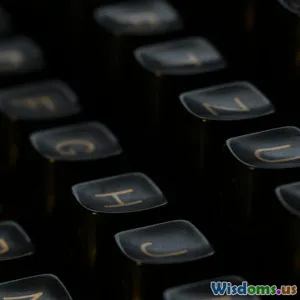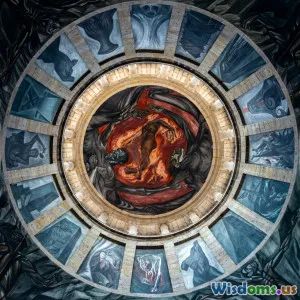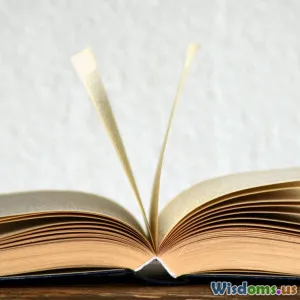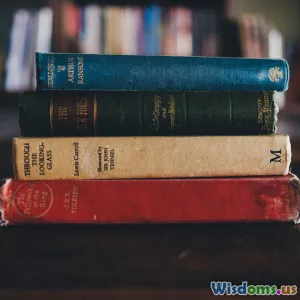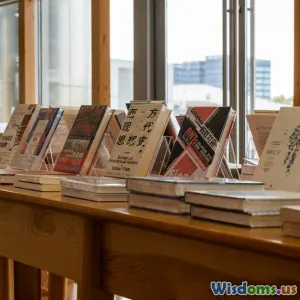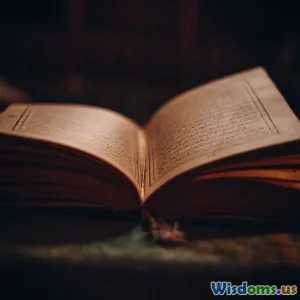
Tips for Tracing Your Favorite Genres Back to Ancient Texts
7 min read Discover how to trace your favorite literary genres back to ancient texts with practical tips and rich examples. (0 Reviews)
Tips for Tracing Your Favorite Genres Back to Ancient Texts
Tracing the roots of your favorite literary genres can be a fascinating journey through time, revealing how ancient storytelling traditions continue to shape modern narratives. Whether you love fantasy, mystery, romance, or drama, many genre conventions can be traced back thousands of years to texts written on clay tablets, papyrus, or carved in stone. This article offers practical guidance for connecting modern genres to their ancient origins, enriched with compelling examples that highlight how historical masterpieces laid the groundwork for today’s literature.
Introduction: Why Trace Genres Back to Ancient Texts?
Understanding the origin of a genre enhances appreciation and insight while revealing humanity’s enduring storytelling impulses. For example, discovering that what feels like a modern dystopia shares roots with Sumerian epics from 4,000 years ago can expand your view of cultural narratives and values. It also showcases the universality and evolution of themes like love, conflict, heroism, and mystery.
Ancient texts provide critical context to genres by exhibiting foundational archetypes, narrative devices, and motifs. These ancient works often fused myth, history, philosophy, and ethical lessons in forms that resonate in contemporary storytelling strategies. Tracing genres is not academic navel-gazing; it is a voyage of narrative ancestry, uncovering where ideas originated and how they adapted across civilizations.
Step 1: Identify Core Characteristics of the Genre
To begin, clearly define the core traits and conventions that categorize the genre you're interested in.
- Fantasy often involves magic, supernatural elements, heroic quests, or alternate worlds.
- Mystery entails suspenseful problem-solving, hidden truths, and clues.
- Romance centers on emotional relationships and love, often overcoming obstacles.
- Drama focuses on intense character development and conflict.
Understanding these elements allows you to filter ancient texts where similar traits appear.
Example:
If you’re tracing fantasy, look for early myths dealing with gods, epic battles, or magical creatures, such as the Epic of Gilgamesh or the Mahabharata.
Step 2: Study Key Ancient Works Relevant to the Genre
Once you have genre characteristics, identify ancient texts with overlapping elements. Several enduring texts serve as genre touchstones, even if unacknowledged popularly.
Fantasy
- The Epic of Gilgamesh (c. 2100 BCE, Mesopotamia): Often considered the earliest great work of literature. It features gods, monsters like Humbaba, and otherworldly quests.
- The Iliad and The Odyssey by Homer (c. 8th century BCE): Classic epics involving gods interacting with humans, heroic exploits, and fantastical scenarios.
Mystery
- The Bible’s Book of Exodus: Contains narrative puzzles and secrets (e.g., plagues, parting of the sea).
- The Egyptian Tale of Setne Khamwas: Involves magic and riddles that lay groundwork for suspense.
Romance
- Roman Love Elegies (Ovid’s Amores, c. 1st century BCE): Influence modern romantic tropes.
- The Tale of Genji (early 11th century Japan): Sometimes called the world’s first novel, illustrating complex romantic entanglements.
Drama
- Greek Tragedies (Aeschylus, Sophocles, Euripides): Established foundational conflict-driven storytelling still emulated.
Deep-diving into such texts illuminates genre lineage and narrative techniques.
Step 3: Use Comparative Literature Tools
Employ academic resources like comparative literature studies, genre theory, and historical context guides. These can demonstrate connections between ancient and modern works, explaining how themes evolved.
For example, the motif of the ‘hero’s journey’ originates from Joseph Campbell’s studies, which analyzed numerous myths including ancient texts to reveal a universal archetype commonly applied in fantasy and adventure genres.
Step 4: Analyze Adaptations and Influences
Investigate how ancient stories informed later writers and genres. Many modern authors explicitly drew inspiration from antiquity.
- J.R.R. Tolkien incorporated Norse myths and the Finnish Kalevala into fantasy classics.
- Agatha Christie’s detective mysteries stem from a tradition of suspense dating back to ancient riddles.
Understanding these chains of influence helps map genre evolution.
Step 5: Explore Translations and Interpretations
Original ancient texts often require reliable modern translations. Choose authoritative translations with annotations clarifying historical context, symbolic language, and cultural nuances.
Reading multiple translations or consulting commentaries can illuminate subtle genre-defining details lost in earlier renderings.
Conclusion: The Rewarding Expedition into Literary Roots
Tracing your favorite genre back to ancient texts is more than a scholarly exercise—it is a rewarding expedition revealing that modern storytelling is a continuation of humanity’s oldest traditions. By identifying genre features, exploring foundational texts, leveraging academic tools, and appreciating adaptations, readers gain enriched perspective on narrative artistry and cultural heritage.
Whether you’re a casual fan, aspiring writer, or literature enthusiast, connecting genres to their ancient origins deepens engagement and appreciation. So, pick a genre you love, seek out its ancient ancestors, and discover the timeless stories that have shaped human imagination across millennia.
Further Reading and Resources
- Joseph Campbell’s The Hero with a Thousand Faces
- Edith Hamilton’s Mythology
- Translations of The Epic of Gilgamesh by Andrew George
- The Oxford Companion to Classical Literature
Dive in—your genre’s ancient roots await discovery!
Rate the Post
User Reviews
Popular Posts











